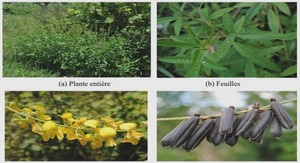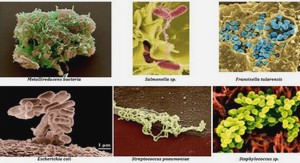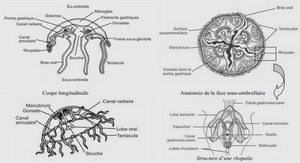Analyse diachronique de la fragmentation des forêts du Liban
New data and conceptual problems
Remote sensing in landscape analysis
In recent years, the use of satellite imagery in ecological research has increased dramatically. The widespread availability of satellite images and of friendly image processing software have drawn ecologists to employ remote sensing to address environmental issues at landscape and regional levels. Common use of remotely sensed data is landcover map production (Boentje and Blinnikov, 2007), which the base of landscape analysis. Remote sensing provides four broad types of information for environmental monitoring and management; these are landscape composition, landscape pattern, biophysical parameters, and their changes in time (Romero and Luque, 2006). Remote sensing also offers an inexpensive means of deriving complete spatial coverage of large areas in a consistent and in an updated manner (Muldavin et al., 2001). Image repetition acquired for the same area (time series), synoptic coverage, and rapid availability of digital format with wide range of analytical methods are three important advantages for choosing remote sensing in landscape ecological evaluations. Remote sensing data is a valuable alternative to large and intensive fieldwork especially at inaccessible mountain areas and for a variety of purposes. Literature Review 40 Depending on the study purpose (monitoring, analyzing, quantifying, time series, etc), ecologists could chose from large variety of sensors. Remote sensing offers sensors such as multispectral (TM, SPOT, AVHRR, etc), hyperspectral (CASI, AVIRIS-airborne, Hyperion, IRS, etc), and radar (SAR, LiDAR, etc), as well as high spatial resolution sensors (IKONOS, QuickBird, etc). For example, forest fragmentation studies have been conducted using data derived from the interpretation of aerial photographs (LaGro, 1991) and digital analysis of satellite imagery on regional or global scale (Matsushita et al., 2006; Boentje and Blinnikov, 2007). Monitoring of changes and understanding its linkage to ecological processes might be achieved by a thorough detailed spatial knowledge of the landscape (Spence, 2001). Remote sensing is advantageous in this type of studies, where decades of changes could be examined (Echeverria et al., 2007). In addition, one of the realistic ways to acquire repeatable information at the scale of the landscape is through satellite remote sensing. Using multiple image processing techniques, e.g. image classifier and segmentation, can be combined with field data to enhance capabilities of remote sensing (Franklin and Woodcock, 1997). Since satellite images became the basis of spatial information that required building the digital mosaic of a landscape and computing landscape indices, new advances in remote sensing increases the accuracy of analysis. Different image classification techniques have been tried to assess landscape spatial patterns. The new approach is the object-oriented classification that proved to be very useful for landscape assessment (Mathieu et al., 2007). Multiple image processing techniques, e.g. image classifier and segmentation, is frequently used (Franklin and Woodcock, 1997).
Landscape spatial analysis inherited inaccuracy
Although ecologists started in late 1970s studying the effect of scale on landscape ecological studies (Openshaw and Taylor, 1979), the promise of remote sensing to solve landscape level research has usually accepted as high (Matsushita et al., 2006). However, this is not always true (Meyer and Werth, 1990; Holmgren and Thuresson, 1998). One of the reasons of failures in remote sensing application is probably the poor understanding Literature Review 41 by ecologists of the limits this technology holds and of the methods used to assess accuracy. Therefore, ecologists require considering overview on (1) feature description and spatial representation and (2) accuracy assessment (Fassnacht et al., 2006). The wide variety of remote sensing raw data encouraged studies to undertake the effect of spatial resolution on landscape indices (Benson and MacKenzie, 1995; Saura and Castro, 2007). Appropriate classification of remotely sensed data and choosing the workable spatial and spectral resolutions are criteria for having accurate landscape indices calculations. In other words, the scale and resolution chosen for a study affect the quantification of landscape fragmentation (Benson and MacKenzie, 1995). For example, in a fragmentation study the smallest patch size depends on the resolution and scale of the satellite image. High-resolution satellite images allow the detection of small sized patches that lead to increase in patch number (Turner et al., 1989). Several studies have demonstrated information loss on a gradient from fine to coarse grain (Laymon and Reid, 1986; Cardillo et al., 1999). Coarse grains result in loss of rare landscape types (Turner et al., 1989). Landscape patterns appear as noise when grain is too fine and as constants when grain is too coarse. The responses of landscape metrics, however, to changing grain size might vary among landscapes and metrics. Although many studies have provided insights into the effect of spatial resolution on landscape indices (Saura and Castro, 2007), it is not yet fully understood how fragmentation indices are affected by spatial resolution. The behavior of various landscape indicators at different scales is not clear. Landscape indices often do not change linearly with scale difference, but rather in a stepwise fashion until a threshold is reached (McShea et al., 2005). The lack of studies that compare landscape indices across scales seriously limits the potential usefulness of quantitative analysis of landscape patterns. Landscape indices have also other types of utilization problems (Figure 9); they might not correlate with processes that could be one of the main reasons behind computing these indices (Li and Wu, 2004). Landscape indices and their relation to processes still an important problem that faces ecologists. All these difficulties when using landscape indices are questioning the ecological significance of such indices. Dilemma of three axes is therefore drawn: conceptual use of the indices, complexity of results and improper use. Figu impr that The rela unw and limi patt misu indi from land issu exp ure 9. Three t roper uses, an overlap with ese complic ate spatial p warranted pr confusion itations of tern and dif use of land ices misuse m a single dscape indic ues must be Landscape lain the sta types of prob nd inherent l h the other ty cations in la pattern to rocess-patte between o landscape fficulties in dscape indic are: quanti landscape ces. Given addressed p ecology se atus of the lems in lands limitations of ypes (Li and W andscape a ecological ern relations observation indices are n interpretin ces when th fying patter and failure the necessi promptly. earches for world and scape analysi f landscape in Wu, 2004). analysis are processes. ships, ecolo and analys e variable ng landscap hey are not rn without c e to deal w ity and imp any relatio how it app s with patter ndices. Each t sometimes The conc ogical insign sis scales. T responses t e indices. T properly tr considering with caveats portance of onships betw pears. Not a Liter n metrics: co type manifest s fatal to a ceptual flaw nificance of Two of the to certain These limit reated. Exam g process, in s of correla spatial patt ween patter all ecologic rature R onceptual flaw ts in several f attempts tha ws are mai f landscape e common i changes in ations may mples of lan nappropriate ation analys tern analysi rn and proc cal processe Review 42 ws, forms at try to inly the indices, inherent n spatial lead to ndscape e results sis with is, these cess that es affect Literature Review 43 patterns and at the same time spatial patterns do not affect all processes. Landscape structure is measured through landscape indices. Ecologically relevant landscape index could link the structure to the dynamic of ecological processes. Moreover, the landscape spatial pattern must answer or reflect the characteristics of the system-studied and the question asked. The scale of observations should be converted into relevant data related to the investigated subject. Landscape indices might also remain unaffected if landscape changes in certain manner. Interpreting indices remains poorly understood, e.g., what the index really measures is uncertain even when the analytical aspects of most indices are quite clear. On the other hand, landscape indices might be test or used in different manner and conceptual ways. The relation of processes to landscape indices could be tested through comparing data from the past with others from, e.g., real time. If processes is reflected through indices then computed indices on data from the past should answer changes occurred in the proceeding time. Another use of landscape indices is how different landcover types are related geometrically to each other. Usually, landscape indices are used to investigate the structural configurations of one landcover nature (e.g. forests). Instead, landscape indices might be used to answer how one landcover type affects another. Changes in the structural configuration of two or more landcover types with regard to each other could provide better ecological concern. Moreover, landscape indices require further testing on Mediterranean landscapes as used in other places. Although many landscapes are out to the reach of ecologists but an area like the Mediterranean might need other or new indices and different conceptual use.
Landscape change detection and diachronic analysis of different data sources
Diachronic and time series analyses, through cartographic and/or satellite data, seem to be an integral part of researches related to forest and life forms changes. Therefore, great numbers of methods were developed to obtain change information of landscapes (Jensen, 1996). Failure to understand the impact of sensor system and environmental characteristics will lead to inaccurate result in a change detection study. In diachronic Literature Review 44 analysis (change detection or any other temporal analysis), data must be thoroughly investigated for their sources and their preparation methods must be greatly understood. The data needed for change investigation studies (diachronic times) might be gathered from variable sources such as field visits, cartographic (categorical maps) and remote sensing (satellite, aerial photos). These facts always depend on the availability of data. Homogenization of different data is an important step in any diachronic research analysis. Diachronic analysis of a landscape has different nomenclature based on the type of the study, e.g., multitemporal change detection, time series analysis, multidate, etc. Change detection analysis (diachronic analysis), through satellite remote sensing, require special care when choosing different data. Accuracy of change detection study depends on issues related to image-related characteristics and to algorithms used. Image related characteristics are temporal resolution, spatial resolution (and look angle), spatial resolution, atmospheric conditions, and landcover conditions (soil, vegetation phenological cycle). The algorithms of change detection are post-classification comparison, write function memory insertion, image arithmetic, manual on-screen digitization of change, and image transformation. It is useful to identify these characteristics and their impact on change detection research results (see Table 4 for more details and methods). In other words, obtaining optimal results and achieving the most effective change detection, specific spatial, temporal, spectral and radiometric data issues must be understood for all change detection methods. A typical list, for example, according to Coppin et al., (2004), and Millward et al., (2006), would include the following issues: Temporal resolution Change detection using satellite images require the temporal resolution to be as similar as possible between the used images. There are two important sensor system temporal resolutions that should be kept almost constant when performing change detection analysis. First, it is best to use similar (same season or month or day) dates for all the remotely sensed data. Second, the remote sensor data used should be obtained from a sensor system that acquired data on same day (or approximately) and in similar Literature Review 45 hours of the day. Same hour acquired images eliminate diurnal sun angle effects that can cause anomalous differences in the reflectance properties of remotely sensed data. Clearly speaking, the imagery should be from the same time of year or season, for each date, to account for solar illumination angle effects and to minimize differences in seasonal vegetation cover (regarding the phenological cycle of vegetations). Spatial resolution The remotely sensed data must be accurately registered to perform analytical change detection. Images from the same sensor will be easily registered to each other because they have the same pixel size. Pixel size of an image depends on the instantaneous field of view (IFOV) of the sensor system. The IFOV dictates the information content of the remote sensing data. Each pixel in the image represents the average reflectance or emittance of the target on the ground. Therefore, resampling pixels size (to a smaller size) will not yield additional spatial details. The remote sensor data used in digital change detection should be acquired with approximately the same look angle. For example, Spot sensor systems are pointable and collect data at look angles that are off-nadir by as much as ±20˚. Two Spot images one has 0˚ off-nadir and another has 20˚ off-nadir look angles; they might lead to inaccurate results in change detection research, especially in a study an area with forests of tall trees. Images should be co-registered or orthorectified to better than one half pixel accuracy, or 0.5 RMSE (Root Mean Square Error), to minimize spatial offset and distortion effects associated with the geometric registration method used. This registration accuracy is also related to original image pixel size. Spectral resolution Remote sensing system has a spectral resolution which the dimension and number of bands in the imagery data. In the ideal situation, the spectral resolution of different remotely sensed data are chosen constant in change detection studies. Analysts should select, otherwise, images of relatively similar bands, e.g., Spot bands 1 (green), 2 (red) Literature Review 46 and 3 (near-infrared) can be matched with bands from Landsat MSS bands 1 (green), 2 (red) and 4 (near-infrared). Radiometric resolution Radiometric resolution is the sensitivity of the sensor (detector) to record differences for radiant flux emitted or reflected from terrain of interest. The sensors collect, normally, data at 8 bits with values ranging from 0 to 255. This is could be called radiometric precision of a sensor which should be the same in change detection remote sensing data. Atmospheric conditions Radiometric normalization may be necessary to remove atmospheric effects – differences caused by scattering and absorption by atmospheric constituents, and by differing solar zenith angles, can falsely mimic change in land cover types, these might include cloud and cloud shadow problems (Coppin et al., 2004). In other words, atmospheric conditions should be normalized for datasets. Analyst, Therefore, run atmospheric correction models for each dataset in change detection research. Each of these sources of variability can contribute to an overall commonality between images, enabling analysis at the lowest possible “common denomination” between datasets. There have been many research studies that developed methods and algorithms for obtaining digital change information, using a wide variety of remotely sensed data. These are summarized in detail by Coppin et al., (2004) and a few are outlined in Table 4. Of those reviewed, linear transformations and image differencing are generally reported to perform better than other bi-temporal change detection techniques and are further discussed below.
Acknowledgement |




